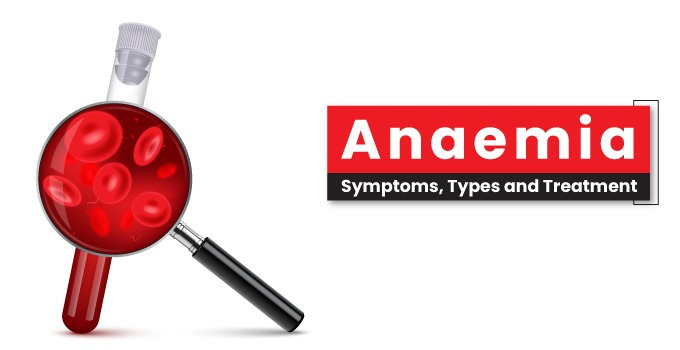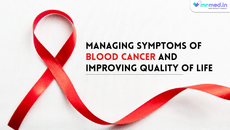The word Anaemia prefix ‘An’ meaning without and ‘aemia’ meaning blood, is a decreased number of red blood cells or haemoglobin in the blood, which leads to a reduced ability of the blood to carry oxygen. The healthy range of haemoglobin for men should range from 13-16 g/dL and for women from 11-15 g/dL. Anaemia can be caused by various factors, including nutritional deficiencies, genetic disorders, chronic diseases, and other medical conditions.
Symptoms of Anaemia:
- Restlessness
- Headache
- Dizziness
- Faintness
- Tinnitus
- Anorexia
- Nausea
- Stomatitis
- Pallor
- Tachycardia
- Cardiac murmurs
Classification of Anaemia:
Anemia is often categorized based on the size and coloration of the red blood cells. One type of anaemia is microcytic hypochromic anaemia, which is characterized by abnormally small red blood cells that are also deficient in hemoglobin. Variety of factors can cause this condoition which includes iron deficiency, thalassemia, or other genetic disorders.
Another type of anaemia is normocytic normochromic anaemia, where the size and coloration of the red blood cells are within the normal range. However, there is still a deficiency in the number of red blood cells or hemoglobin. This type of anaemia can be caused by conditions such as chronic kidney disease, chronic inflammation, or bone marrow disorders.
Lastly, macrocytic hyperchromic anaemia is characterized by abnormally large red blood cells that have a higher concentration of hemoglobin. This can be caused by a deficiency in vitamin B12 or folic acid, or by alcohol abuse, liver disease, or certain medications.
Classification of anaemia based on the size and coloration of red blood cells is useful in determining the underlying cause of the condition. Treatment may vary depending on the type and cause of the anaemia, so proper diagnosis is important for effective management.
Types of Anaemia:
- Iron deficiency anaemia - Occurs when there is a lack of iron in the body, leading to decreased production of hemoglobin
- Megaloblastic anaemia - Caused by a deficiency of vitamin B12 or folic acid.
- Pernicious anaemia - Caused by the body's inability to absorb vitamin B12 due to the lack of intrinsic factor -
- Hemorrhagic anaemia - Occurs when there is a loss of blood, either through injury, surgery, or menstruation.
- Hemolytic anaemia - Occurs when the body destroys red blood cells faster than it can produce them. .
- Aplastic anaemia - Occurs when the bone marrow is unable to produce enough red blood cells, white blood cells, and platelets.
Diagnosis of Anaemia
The specific tests used to diagnose anemia may vary depending on the suspected cause of the anemia and the individual patient's medical history and symptoms.
- Complete Blood Count (CBC): Helps in measuring the number of red blood cells (RBC), white blood cells (WBC), and platelets in the blood, as well as the hemoglobin and hematocrit levels. A low red blood cell count or low hemoglobin level can indicate anemia.
- Peripheral blood smear: It is a laboratory test that involves examining a sample of blood under a microscope to assess the size, shape, and appearance of red blood cells. This test can help diagnose different types of anaemia, such as iron deficiency anaemia or sickle cell anaemia.
- Serum iron level: It measures the amount of iron in the blood. Low levels of serum iron can indicate iron deficiency anaemia.
- Vitamin B12 and folate levels: Decreased amount of vitamin B12 or folate can cause megaloblastic anaemia. Blood tests can determine the levels of these vitamins in the blood.
- Bone marrow biopsy: In rare cases, a bone marrow biopsy may be necessary to diagnose anemia. In this method a small sample of bone marrow from the hip bone is removed and examined under a microscope to assess the production of red blood cells.
Treatment for Anaemia:
- Nutritional supplements can be helpful in restoring red blood cell production. Iron supplements, vitamin B12 injections or supplements, and folate supplements are commonly used.
- In cases where anaemia is severe or life-threatening, a blood transfusion may be done to replace the lost red blood cells. This involves receiving blood from a donor that contains healthy red blood cells.
- Certain medications can be used to treat anaemia. For example, erythropoietin-stimulating agents (ESAs) can stimulate the production of red blood cells in certain types of anaemia, such as anaemia caused by chronic kidney disease or cancer.
- Making changes to one's diet can be effective in managing anaemia. Consuming foods rich in iron, vitamin B12, and folate, such as leafy greens, beans, and red meat, improves red blood cell production. Exercise and managing stress levels can also be helpful.
Renocrit 4000 IU Injection contains the active constituent Recombinant Human Erythropoietin Alfa. It stimulates the production of red blood cells (red blood cells carry the hemoglobin, a substance which transports oxygen) in the bone marrow. It is used in the treatment of anaemia in patients with kidney disease, bone marrow disorder and to those who are receiving chemotherapy for solid tumors and also who are moderately anaemic and about to have surgery. Increased blood pressure, chest pain, stuffy nose, nausea and vomiting are the common side effects of Renocrit 4000 IU Injection.




